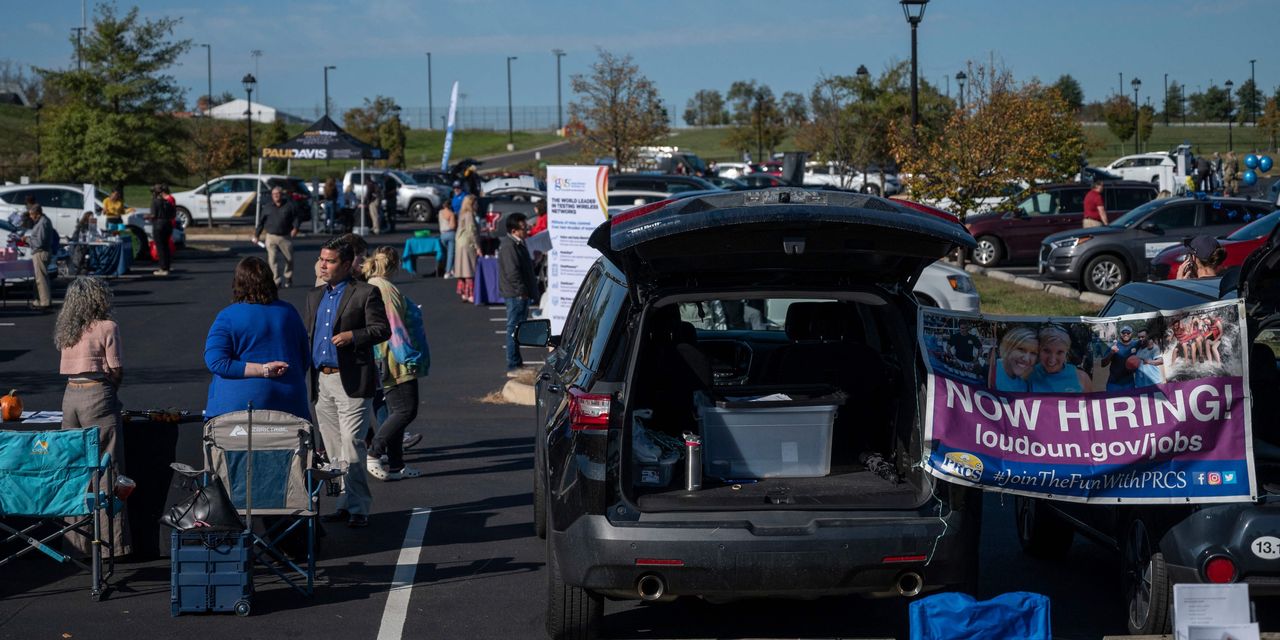
New applications for unemployment benefits edged higher last week but stayed very low, reflecting an unusually tight labor market as the economy continued to recover.
Initial jobless claims, a proxy for layoffs, inched up by 18,000 to 206,000 for the week that ended Dec. 11 from a revised 188,000—the lowest level in 52 years—the week before, the Labor Department reported Thursday. New jobless claims have been steadily declining throughout the year.
Last week’s four-week moving average, which smooths out volatility, fell to 203,750, the lowest since November 1969.
“It’s a tight labor market because of quits and a reluctance to go back to work, which are mainly because of Covid,” said Robert Frick, corporate economist at Navy Federal Credit Union.
Employers are holding on to their workers as millions of people continue to quit their jobs. In October alone, 4.2 million quit—a slight decrease from the month before, but still higher than before the pandemic. The gap between available jobs and unemployed people actively seeking work has persisted to the point where there were about four million more open positions than people seeking work in October.
Workers quitting at elevated levels adds pressure to a labor market already strained by strong consumer demand, high employer demand for workers, a shrunken labor pool, supply-chain difficulties and the uncertainty introduced by coronavirus variants such as Omicron and Delta.
Workers have also become more selective in the kinds of jobs they want.
Sectors in which jobs are more likely to be carried out in person and are on the lower end of the wage scale are more likely to see a reshuffling in which workers leave one industry for another, said AnnElizabeth Konkel, an economist at the job-search site Indeed.
Retail trade, healthcare and social assistance, and accommodation and food services were among the sectors with the most job openings in October, according to Labor Department data.
“We’ve found that job seeker interest has just been more toward higher-wage sectors and job sectors where there’s a higher possibility of working remotely,” Ms. Konkel said.
A smaller workforce is contributing to the labor market’s tightness. The labor-force participation rate, the share of the working-age population that is either employed or seeking employment, was 61.8% in November, below 63.4% in January 2020, before the pandemic hit the U.S. economy.
According to Mr. Frick, early retirements in 2020 coupled with workers still remaining on the sidelines for reasons related to Covid-19 are keeping workforce participation from rebounding to pre-pandemic levels.
Retaining and attracting workers in an unusually tight labor market has become a priority for businesses such as Oats Overnight, a food-product company based in Tempe, Ariz., that was founded in 2016 and currently has around 105 employees.
Brian Tate, the company’s founder and chief executive, said that earlier in the year the company would have around 10 job interviews lined up but that only a few candidates would show up.
Mr. Tate said the company increased its minimum wage to $15 an hour from $13, in addition to offering employees stock options as a benefit. He said the sweeteners have made a difference.
“Now more people are showing up and staying, so it’s gotten a little more consistent,” he said. “We’ve been able to scale up more quickly, hire more quickly and have less turnover on the back end.”
Continuing claims, a proxy for those receiving unemployment insurance payments, made through pandemic-related programs and all others rose by more than half a million for the week ended Nov. 27. These data, unlike the initial claims figures, aren’t adjusted for seasonal fluctuations, but Mr. Frick said they could reveal broad patterns over time.
The number of Americans receiving unemployment benefits overall has declined throughout the year.
Economists have noted that seasonal adjustments have been thrown off because of the pandemic, which some said was the reason why jobless claims were at their lowest in more than half a century for the week ended Dec. 4.
“We have to remember that a year ago, the labor market was in a state of tremendous flux. A lot of it because of the terrible winter wave of Covid that was just beginning. Seasonal hiring was completely out of whack because of Covid, so given seasonal adjustments, we have to be very careful when you look at these numbers to draw any conclusions,” Mr. Frick said.
Copyright ©2021 Dow Jones & Company, Inc. All Rights Reserved. 87990cbe856818d5eddac44c7b1cdeb8







